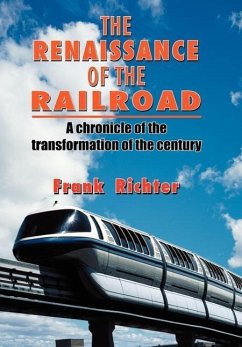The Goias Railway was a landmark in the city of Anapolis, decisive in its modernization mainly because it was in this city that its tracks ended. Its trajectory was marked by interruptions in its construction and by crises that culminated in the removal of the tracks from the center of Anápolis in 1976. The workers who worked on the construction, maintenance and operation of the railroad went through many difficulties until they received the benefits of the CLT, and women, although few in number, were present in the railroad environment. The crisis of the railroad system throughout the country, the coexistence between the urban environment and the railroad and, above all, the interplay of political and personal interests transformed the railroad from a "symbol of modernity" into an "obstacle to the development of the city".
Hinweis: Dieser Artikel kann nur an eine deutsche Lieferadresse ausgeliefert werden.
Hinweis: Dieser Artikel kann nur an eine deutsche Lieferadresse ausgeliefert werden.








